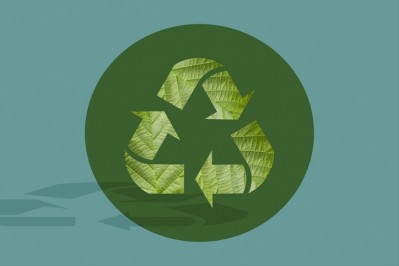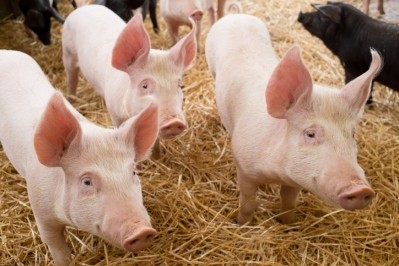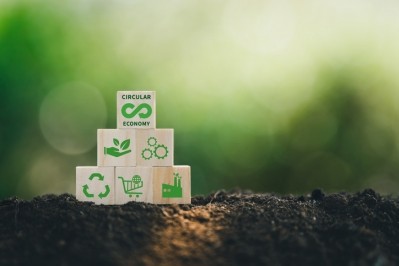Guest Article
EU feed industry outlook 2022

A key concern over the past 12 months has been prices for feed raw materials, which have been very high, putting pressure on the viability of livestock farm sectors across Europe.
Unfortunately, it is unlikely that we’ll see improvements in the short term, but feed manufacturers will certainly do their utmost to assist their livestock farmer customers where they can.
Deforestation-free supply chains
The publication of the EU Commission proposal on deforestation-free supply chains in November made clear that this topic will keep us very busy in 2022; it will be a key priority file for the incoming EU Council French Presidency.
We have been anticipating this legislative proposal for some while, of course, and have prepared the ground with the FEFAC Soy Sourcing Guidelines 2021, which were released in February. At this stage, there are 15 benchmarked soy schemes and programs that can deliver ‘conversion-free soy’, i.e. going beyond the currently proposed scope of forest protection.
But we hadn’t anticipated such a lack of understanding of how soy supply chains function.
The current requirement that all placements of soy on the EU market, whether that is imported or domestic soy, be accompanied by geo-localization data, tracing the soy back to farm plot level, is seen as unfeasible and disproportionate. There lies a task ahead then for FEFAC and its soy value chain partners to better explain how our chain of custody models work and how they contribute to sustainable sourcing, in particular when it comes to mass balance systems.
Environmental footprint measurements
From what we understand now, the European Commission's proposal for substantiating green claims using the PEF Method is expected somewhere in the first half of 2022. In a sense, we have been anticipating this legislative proposal since 2014 when we started working on the PEFCR Feed for Food-Producing Animals [methodology] as part of a pilot [initiative], which was finalized in 2018.
These are the guidelines that allow for a harmonized, verifiable and credible way to measure the environmental footprint of compound feed production. Increasingly, we are seeing EU legislation where the use of PEF is considered mandatory.
The fact that we have our PEFCR Feed for Food-Producing Animals [methodology] does not mean we are done, however. There are still important methodological aspects to be worked out in 2022, such as the modelling of methane and ammonia emissions related to feed digestion by a farm animal.
FEFAC is also very much aware that it needs to facilitate [greater] understanding of the complexity of measuring the environmental footprint of feed. We need to explain further the essence of the PEFCR Feed for Food-Producing Animals [tool]. We are also expecting further advances to be made by the GFLI in 2022, which has seen increases in its membership while new high-quality datasets are set to be added to its database.
New genomic techniques
Discussions on the EU Farm to Fork (F2F) strategy will keep affecting the overall livestock economy. But a key topic for 2022 will be the roll out of the future legal framework for seeds produced by new genomic techniques (NGTs), which, from a legal perspective, may have a more lasting long-term impact than some other measures.
The outcome of this debate will determine the ability of the EU to effectively address the societal aspirations for food chains that are respectful of the environment and animal welfare, and, at the same time, secure sufficient food supply in particular regarding home-grown vegetable protein sources. Only the political will to allow new technology to play its part in reconciling sustainability and food security demands can potentially reverse the negative impacts of the F2F strategy.
Feed additive legislation
The recasting of the feed additives legislation was expected in December 2021, but we’ve learned that the development of the proposal is taking more time than scheduled, and is now expected in June 2022.
Admittedly, the number of policy options considered by the European Commission is huge. We will see what the final delivery will look like, but early indications suggest we are talking about an evolution, not a revolution. The most important change is expected to concern measures to encourage applicants to submit dossiers for generic feed additives via market protection granted for a certain period of time.
Medicated feed
In 2022, the new rules for the manufacturing of medicated feed enter into application, in particular the ban on the use of medicated feed with antimicrobials for prophylactic purposes.
Together with the expiration of the authorization to use zinc oxide as veterinary medicine, these new rules are expected to provide the opportunity for the animal nutrition [market] to showcase the potential [of some products] to help farmers develop an effective on-farm animal health management program.
Circular economy
The coming year will also most likely see a further step [taken] in the promotion of the concept of circular feed, building on discussions held on non-human edible feed and non-food grade feed ingredients.
Circular feed should capture the idea of local sourcing of feed materials that do not come into competition with direct food use, while optimizing nutrient efficiency.
The concept is driving a lot of creative ideas, with projects exploring the potential inclusion of feed resources that are currently not permitted, legally.
We are, perhaps, also seeing the limitations here of EU feed and food legislation that gave preference, in certain areas, to a hazard based approach (translating into prohibition) rather than a risk-based approach (conditional authorization). The lifting of the ban on the use of avian and porcine PAPs in 2021 was a clear illustration of the political will to consider [market] re-openings, without compromising feed and food safety.













